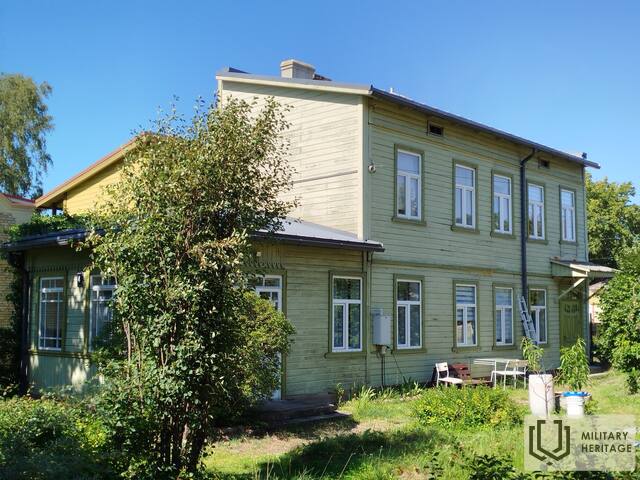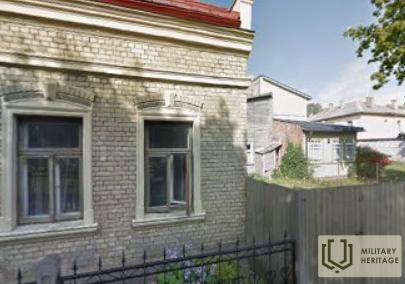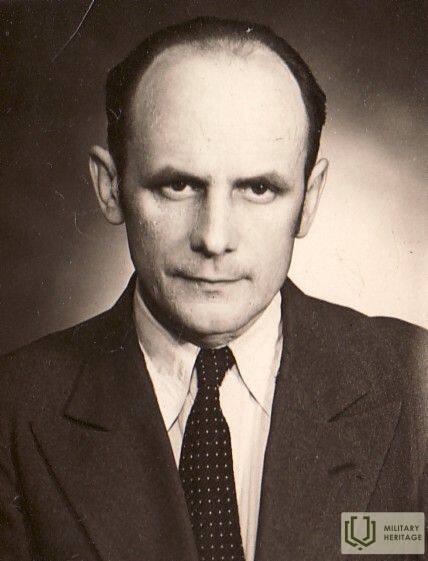Ēka Ventspilī, kur 1944.-1945. gadā dzīvoja LCP pārstāvis un bēgļu laivu satiksmes organizators Kurzemē Dr. Valdemārs Ģinters
Piemiņas vieta

Nams Katrīnes ielā 4, Ventspilī, kurā darbojās arheologs Valdemārs Ģinters.
No 1944. gada oktobra līdz 1945. gada 8. maijam LCP pārstāvis Kurzemē bija arheologs Valdemārs Ģinters (segvārdi “Dakters”, “Dārznieks”) (1899–1979). Latvijas Neatkarības kara dalībnieks, Valsts vēsturiskā muzeja direktors un Latvijas Universitātes docents. Apbalvots ar Lāčplēša Kara ordeni un Triju Zvaigžņu ordeni. Viens no 1944. gada 17. marta LCP memoranda parakstītājiem. Pēc Otrā pasaules kara dzīvoja Zviedrijā. No 1949. līdz 1979. gadam Latviešu Nacionālā fonda valdes priekšsēdis.
Izmantotie avoti un saites:
B. Eglāja. Valdemārs Ģinters - arheologs un personība // Cauri gadsimtiem. Rakstu krājums, veltīts Valdemāram Ģinteram. Rīga: Latvijas vēstures muzejs, 2000, 7.-11. lpp.
Dz. Ērglis. Latvijas Centrālās padomes aktivitātes (1943-1945): Laivu akcijas // Latvijas valstiskumam 90. Latvijas valsts neatkarība: ideja un realizācija. Rīga: Latvijas vēstures institūta apgāds, 2010, 280.-297. lpp.
Saistītās laikalīnijas
Saistītās tēmas
Saistītie stāsti
Pirmā bēgļu laiva "Centība" no Bambāļiem
1944. gada 31. oktobrī Kurzemes piekrasti atstāja laiva "Centība". Šīs laivas došanos ceļā no vairāku līdzgaitnieku atmiņu aprakstiem rekonstruēja Latvijas Centrālās padomes sakarniece Valentīne Lasmane
Valdemāra Ģintera slepenā un bīstamā darbība
Valdemāra Ģintera vārds bija daudzu latviešu bēgļu pēdējā cerība aizbēgt pāri uz Zviedriju. Pārāk lielā bēgļu uzmanība bija bīstama un tādēļ Ģinters ieturēja slepenību
Valentīnes Lasmanes veiksmīgā bēgšana
Valentīnes Lasmanes uzrakstīts biogrāfisks stāsts par to, kā viņai izdevās izbēgt no apcietinājuma vācu okupācijas laikā
Bēgļu laivu pārcelšanās vieta no Kurzemes piekrastes uz Zviedriju pie "Pāžu" mājām
Viena no būtiska pārcelšanās vieta bija pie “Pāžu” mājām, kur tagad ir uzstādīts piemineklis - “Cerību bura”. "Kuģīši nāca regulāri un no “Pāžiem” aizbrauca visvairāk cilvēku”", vēsta I.Freiberga atmiņas.


















